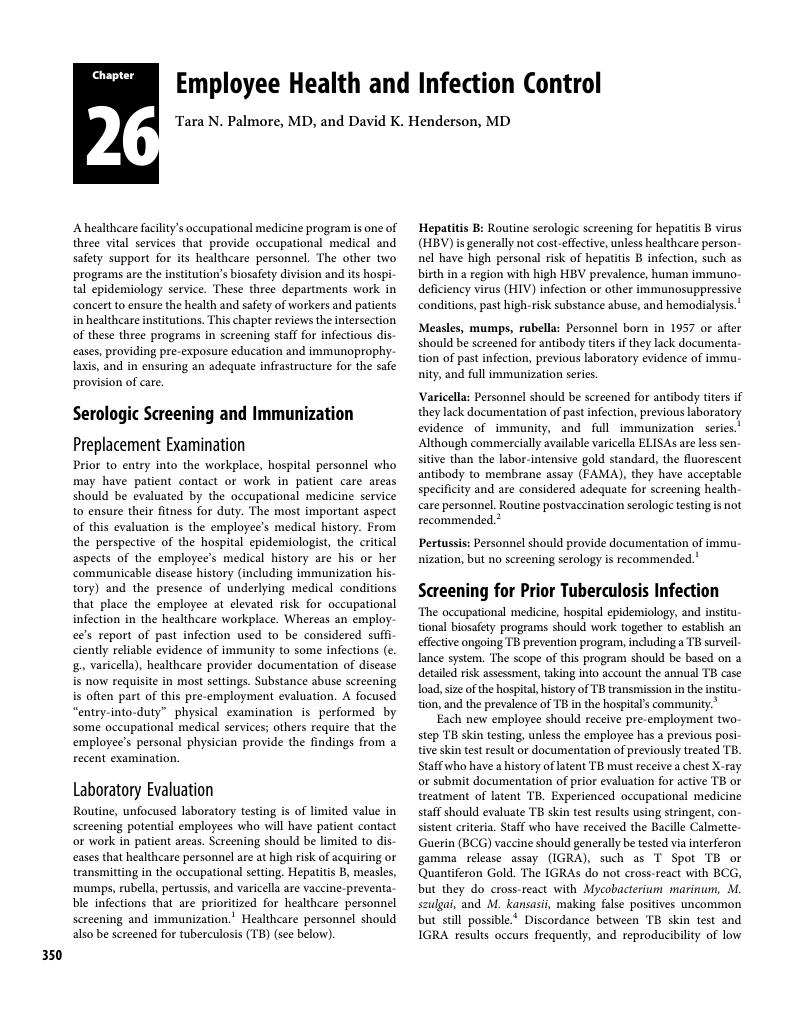Book contents
- Practical Healthcare Epidemiology
- Practical Healthcare Epidemiology
- Copyright page
- Dedication
- Contents
- Contributors
- Preface
- Section 1 Getting Started
- Section 2 Infection Prevention Basics
- Section 3 Major HAI Categories: Surveillance and Prevention
- Section 4 Antimicrobial-Resistant Organisms
- Section 5 Special Settings
- Section 6 Special Topics
- Chapter 23 The Role of the Laboratory in Prevention of Healthcare-Associated Infections
- Chapter 24 Biological Disasters
- Chapter 25 Exposure Workups
- Chapter 26 Employee Health and Infection Control
- Chapter 27 Tuberculosis Infection Control in Healthcare Settings
- Chapter 28 Patient Safety
- Chapter 29 Infection Prevention in Design, Renovation, and Construction
- Chapter 30 Regulatory Issues Concerning Healthcare Epidemiology and Infection Prevention
- Index
- References
Chapter 26 - Employee Health and Infection Control
from Section 6 - Special Topics
Published online by Cambridge University Press: 02 April 2018
- Practical Healthcare Epidemiology
- Practical Healthcare Epidemiology
- Copyright page
- Dedication
- Contents
- Contributors
- Preface
- Section 1 Getting Started
- Section 2 Infection Prevention Basics
- Section 3 Major HAI Categories: Surveillance and Prevention
- Section 4 Antimicrobial-Resistant Organisms
- Section 5 Special Settings
- Section 6 Special Topics
- Chapter 23 The Role of the Laboratory in Prevention of Healthcare-Associated Infections
- Chapter 24 Biological Disasters
- Chapter 25 Exposure Workups
- Chapter 26 Employee Health and Infection Control
- Chapter 27 Tuberculosis Infection Control in Healthcare Settings
- Chapter 28 Patient Safety
- Chapter 29 Infection Prevention in Design, Renovation, and Construction
- Chapter 30 Regulatory Issues Concerning Healthcare Epidemiology and Infection Prevention
- Index
- References
Summary

- Type
- Chapter
- Information
- Practical Healthcare Epidemiology , pp. 350 - 360Publisher: Cambridge University PressPrint publication year: 2018



